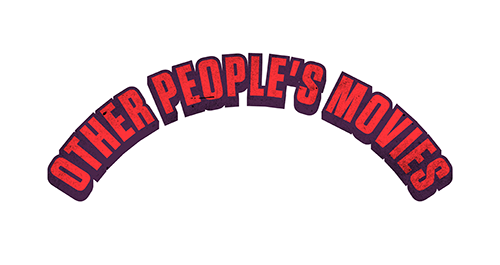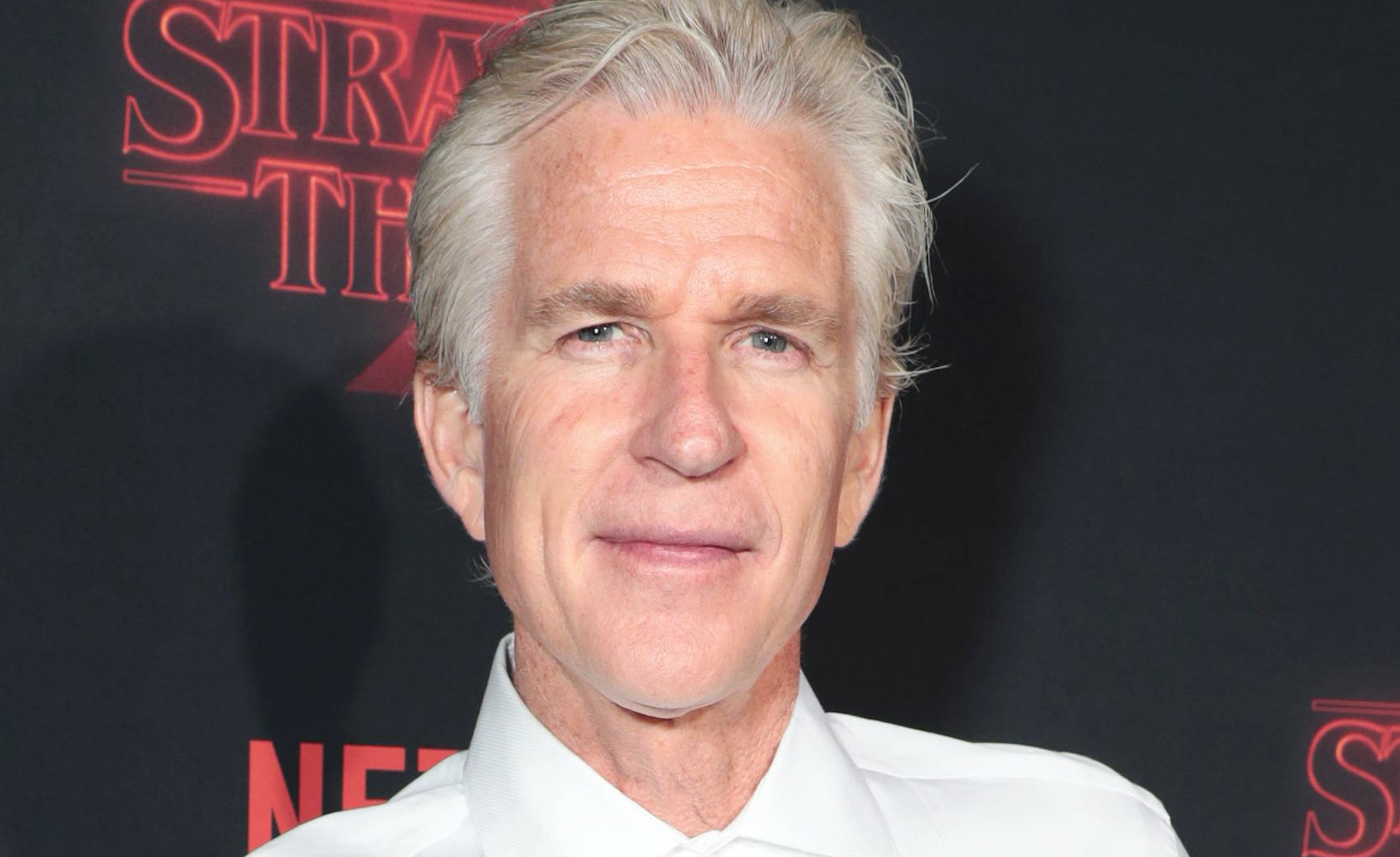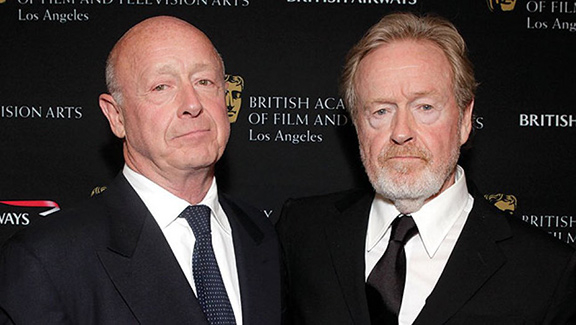
Tony and Ridley Scott are two of the most successful directors in Hollywood history. They are each responsible for numerous bona fide classics. The England-born brothers share many other similarities, but they also have just as many stark contrasts that make them stand entirely on their own.
The Scott brothers were both trained as visual artists, and they both cut their filmmaking teeth in the world of advertising. At their shared commercial production company, Ridley Scott Associates (RSA), they developed a similar slick, smoke-filtered style that would be as identifiable as it was influential in the years to come.
The most obvious similarities end there. If older brother Ridley’s work is the equivalent to classical symphonies, then kid brother Tony’s is comparable to rock n’ roll. Their aesthetics only seemed to grow further apart as their careers progressed—even though they worked together as producers at Scott Free Productions until Tony’s untimely death in 2012.
When you pair some of their films up, Tony and Ridley Scott’s differences and similarities are quite clear. But the quality of their work is most evident, as they both directed multiple films that will live on far longer than any one of us.
10. Hannibal (2001) and Beverly Hills Cop 2 (1987)
The Scott brothers have both directed sequels to original films that had nothing to do with them. And they’re both comedies—though one of them isn’t exactly an obvious one.

Ridley’s Hannibal is the sequel to Jonathan Demme’s 1991 multi-Oscar-winning classic, The Silence of the Lambs. When compared to its straight-laced predecessor (and the rest of Ridley’s career), Hannibal takes on a very unexpected storyline and tone. Like its controversial source novel by Thomas Harris, the film lacks an obvious moral compass. It is a darkly comedic and strangely quirky take on a once-horrific, now-iconic character (Hannibal the Cannibal).
Hannibal may not be Ridley’s best work, but it is an interesting departure for him. The film and its villainous characters aren’t scary, they’re darkly (and grossly) amusing. Filled with gore and grisly violence, Hannibal is more concerned with creating uncomfortable laughs than instilling terror. It does so successfully and, typical of a Ridley Scott film, with more than a fair amount of elegance.
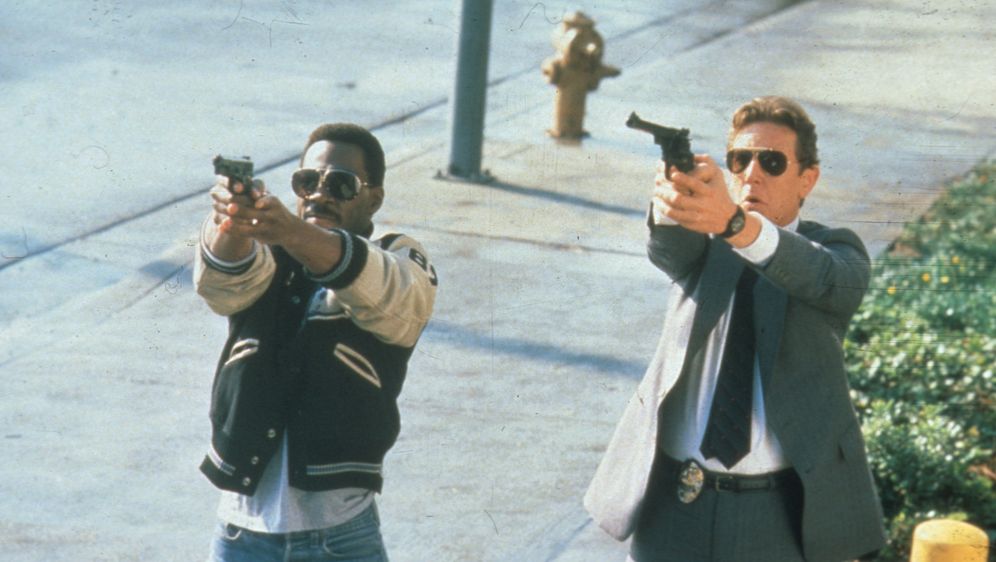
Tony’s Beverly Hills Cop 2 is the sequel to the 1984 Martin Brest-directed, Eddie Murphy-starring hit. It is Tony’s second collaboration with powerhouse producers Don Simpson and Jerry Bruckheimer after Top Gun. The film is wholly entertainment-driven, filled with harmless laughs and some spectacular action.
Tony was still a relatively new force in Hollywood when he delivered Beverly Hills Cop 2. While the script isn’t exactly meaty, it gave its director the opportunity to showcase his technical abilities, his knack for balancing action and comedy, and his charmingly chaotic sensibilities. This is also not Tony’s best work, but it is his most effervescent.
Ridley’s sequel is a bloody and artistically refined dark comedy. Tony’s is an explosively unhinged and funny action-comedy. One balances the other and makes up for what the other lacks in this particular Scott brother double feature.
9. Gladiator (2000) and Days of Thunder (1990)
Tony and Ridley Scott both made a film that explores spectator sports. Tony’s film centers on nineties stock car racing, while Ridley’s centers on Roman gladiators during the second century AD. Each film stars a different actor who was (or still is) a close collaborator of each filmmaker. Both films also feature a musical score by the great Hans Zimmer, another frequent collaborator of both Scott brothers.

Gladiator is Ridley’s Oscar-winning swords and sandals epic. It features exhilarating, bloody scenes of battle—in and outside the arena—that are executed with expertise. Russell Crowe, in his first of five films with Ridley, stars as Maximus, a former Roman general turned reluctant gladiator.
Gladiator’s carnage is balanced by moments of ethereal beauty that are typical of a Ridley Scott film. The presentation of Maximus’ interior fantasy life—where he returns home to his beloved family—is the heart of the character and the film. Gladiator’s sensitivity makes for a full viewing experience that isn’t committed to any single intention or mood.

Days of Thunder is Tony’s summer blockbuster take on NASCAR. It puts its audience right on the racetrack with numerous set pieces filmed from just about every conceivable camera angle. The film is pure escapist entertainment, featuring characters with charmingly formulaic struggles that make their final victory feel all the more rewarding.
Days of Thunder stars Tom Cruise, who had previously starred in Tony’s breakout classic, Top Gun. Cole Trickle was the perfect character for the popular star at this point in his career. Like Maverick in Top Gun, Trickle is a brave, charmingly cocky hotshot who is just flawed and damaged enough to be mysteriously captivating.
Both films feature protagonists that are suffering for their sport and their fans. Gladiator’s Maximus is an enslaved victim to his audience’s demands, privately dreaming of a life of tranquility. Days of Thunder’s Cole Trickle is a willing participant, so addicted to the adrenaline and glory of his sport that he risks exacerbating a potentially deadly injury to continue doing it. These contrasts highlight some of the fundamental differences between Ridley’s and Tony’s work.
8. 1492: Conquest of Paradise (1992) and Crimson Tide (1995)
The Scott brothers have both made films about ship captains who face potential mutiny from their subordinates. Tony’s is a Jerry Bruckheimer-produced, then-modern-day submarine thriller starring Denzel Washington and Gene Hackman. Ridley’s is a historical epic about Christopher Columbus starring the French superstar, Gerard Depardieu.
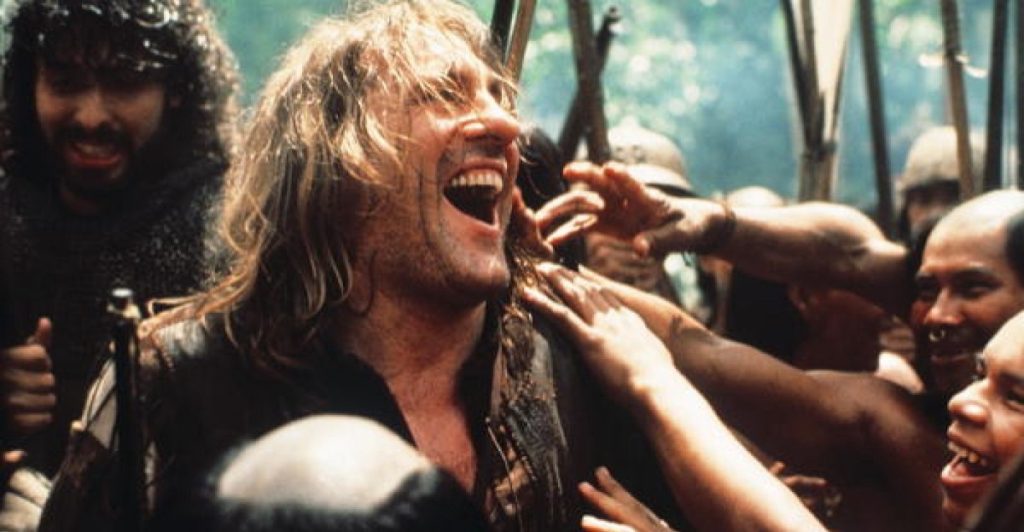
Ridley’s 1492: Conquest of Paradise is visually elegant and moves with a slow, determined pace. Ridley presents Columbus’ discovery of the New World with the same, meticulous attention to detail as he does his fantasy and science fiction films. The vast ocean Columbus travels and the newfound land he explores have the same sense of otherworldly wonder as the environments Ridley has designed out of pure imagination.
1492 was one of Ridley’s largest box office and critical disappointments. Earning back only a fraction of its near-fifty-million-dollar budget at the box office, no one seemed interested in his ethereally epic, artistically complex take on history. Critics and audiences couldn’t grasp a film that neither glorified nor vilified its controversial historical subject.
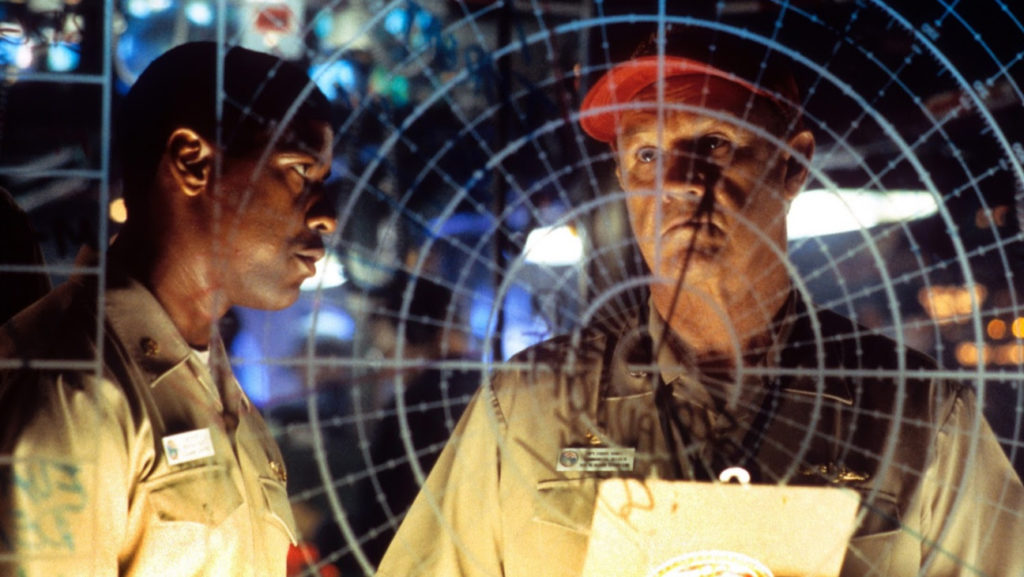
Tony’s Crimson Tide, on the other hand, was nothing short of a crowd pleaser upon its initial release. Featuring his first of five collaborations with Denzel Washington, the movie was a sizable theatrical hit, tripling its fifty-million-dollar budget in worldwide grosses.
Crimson Tide is a taut, claustrophobic thriller that is fuelled by tension and testosterone. It adheres to a familiar and audience-friendly formula. Though well-made on every level, it is one of Tony’s safest entries on his resume. It’s filled with numerous pop culture references (no doubt courtesy of Quentin Tarantino’s uncredited screenplay rewrites) that give the movie an unthreatening and oftentimes playful tone.
1492 features Ridley’s love of world-building, complex characters, languid pacing, and classical execution. Crimson Tide features Tony’s love of heightened machismo, airtight pacing, and unabashed movie logic. Though they had both worked and would continue to work outside of their comfort zones, these two films essentially sum up the qualities for which Tony and Ridley Scott are best known.
7. Black Rain (1989) and The Last Boy Scout (1991)
It’s no secret that Tony Scott was a premiere director of action films. His bombastic sensibilities suited him well for the genre. Ridley, on the other hand, isn’t such an obvious fit. Though he has executed several action scenes throughout his career, his only straightforward action movie is his half of this Scott brother action/buddy double feature.
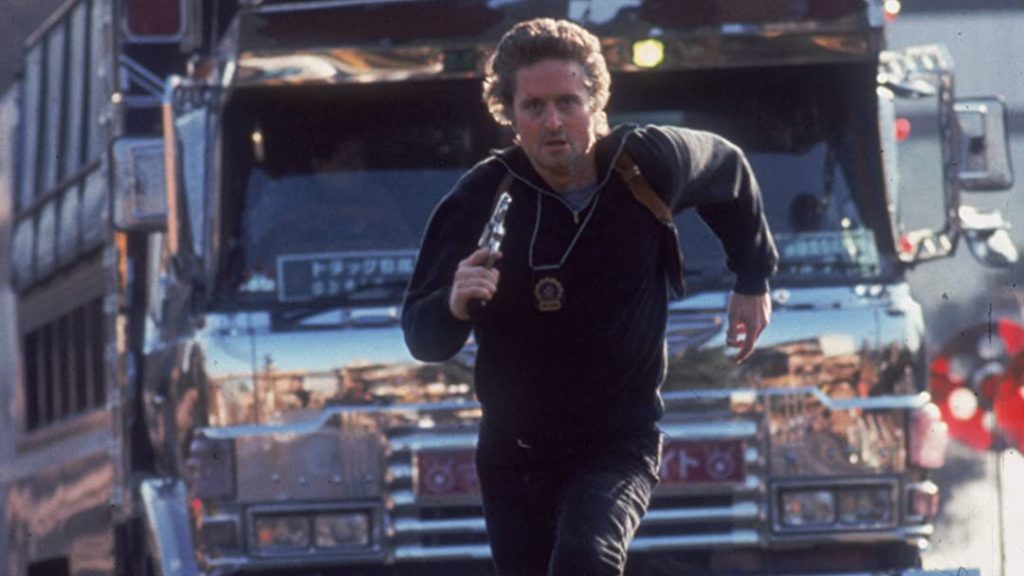
Ridley’s Black Rain stars Michael Douglas, Andy Garcia, and Ken Takakura as police officers trying to take down a member of the Yakuza (Yusaku Matsuda). The story starts in New York City, then moves to Osaka, Japan. While there is plenty of thrilling action, the film evolves into a thoughtful and surprisingly sensitive exploration of xenophobia. Douglas and Takakura’s conflicts stem from their cultural and racial differences. When they put those differences aside, the film reveals an enormous heart, which provides a perfect balance to the film’s abundance of gritty and graphic violence.
Ridley captures the city of Osaka with the same exoticism as the futuristic cityscape of Blade Runner. By doing so, he communicates the anxiety and awe of a stranger in a strange land. While Black Rain may be an entertainment-driven action/thriller at heart, it also benefits from Ridley’s eloquence and his talent for depicting complex characters and themes.
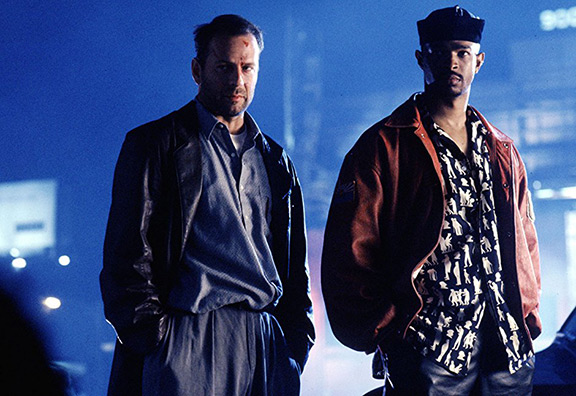
Tony’s The Last Boy Scout is a more conventional action film, though it’s not without its complexities. Clearly, the filmmaker was striving to explore more adult themes at this point in his career. The Last Boy Scout has plenty of bang for the buck, but it also features characters that are suffering through real-life ordeals: adultery, addiction, depression, etc.
Written by Shane Black (Lethal Weapon) and produced by action titan Joel Silver, The Last Boy Scout delivers some outlandish set pieces that are more exhilarating than they are believable. Scott’s depiction of Black’s complex characters grounds the film, however, so that you’re still engaged no matter how over-the-top it gets. The film’s bickering private investigator/former NFL star duo (Bruce Willis and Damon Wayans) has immense charm, humor, and humanity.
Ridley’s action movie is serious-minded and reality-based. It is set within a gorgeously detailed environment that highlights its protagonist’s mindset. Tony’s movie is colorful, funny, and fast-paced. It is attuned to commercial sensibilities while still containing characters that are developed and relatable. With this double feature, the differences and similarities between Tony and Ridley Scott reveal themselves quite plainly.
6. The Counselor (2013) and Revenge (1990)
The Scott brothers, despite their obvious commercial sensibilities, sometimes had the desire to go dark—very dark—in their films. This particular double feature of (then-) modern noirs showcases both filmmakers at their most nihilistic and uncompromising.
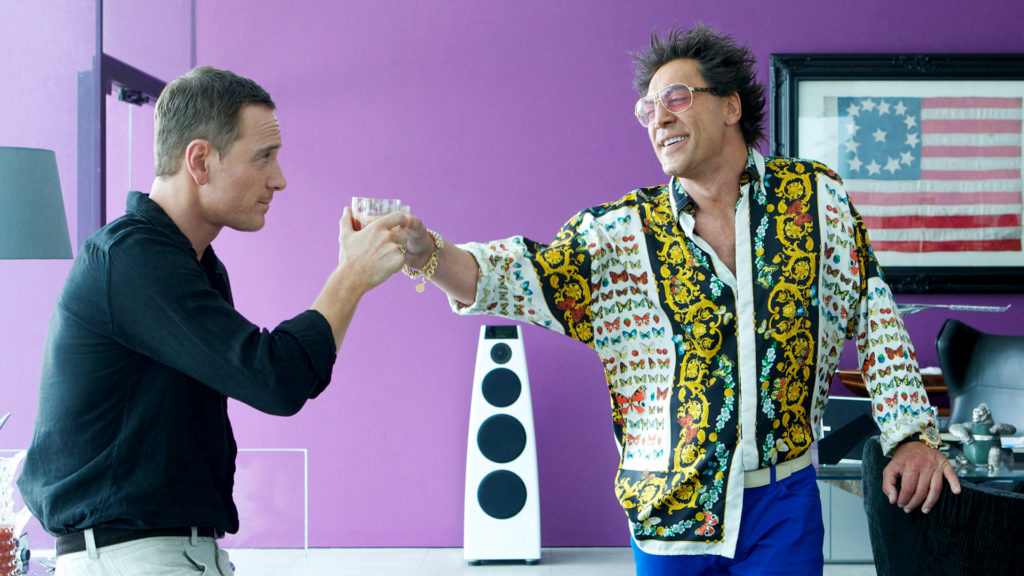
Ridley’s The Counselor, based on a screenplay by novelist Cormac McCarthy, is quite the departure for the elder Scott brother. Though lensed with his usual slick/gritty photography, there is little else in the film that overtly suggests it to be directed by Ridley Scott. The Counselor lacks his elegance. The film’s intentionally coarse, jagged, and carefree execution belongs more in Tony’s territory. It’s no coincidence that Ridley dedicated this particular film to Tony’s memory, as it clearly channels his anarchic spirit.
The Counselor has a downright nasty heart. It’s as dark as either Scott brother has ever gotten. It’s so dark that the film, thankfully, can’t help but laugh at itself (this is particularly evident in the extended director’s cut). The film has a devilishly playful tone that provides some relief to the audience, but the characters of the film (portrayed by such Hollywood heavyweights as Michael Fassbender, Javier Bardem, Penelope Cruz, Cameron Diaz, and Brad Pitt) never get that relief for themselves.
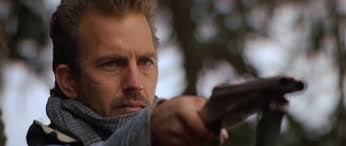
The characters of Tony’s Revenge, based on Jim Harrison’s novella, face an equally bleak fate. Like Ridley’s The Counselor, Revenge is an enormous departure for its director. Unlike The Counselor (and the majority of Tony’s filmography), Revenge lacks overt flair, humor, and style. It unravels at a determined pace more reminiscent of Ridley than Tony, and it refuses to comfort its audience with the familiarity of trite movie logic. Revenge is Tony’s most painfully human movie.
Starring Kevin Costner, Revenge has the soul of an independent film and the production value of a blockbuster. It initially looks and feels safe (complete with an opening that feels like it’s straight out of Top Gun), but steadily becomes far more dangerous than most studio films are allowed to be. It is a film that brazenly presents the harsh and painful consequences of its characters’ morally ambiguous actions.
This double feature of Scott brother nihilism features each filmmaker working outside of their comfort zones. You can see the influence they had on each other in each film, but you can also sense their desires to rediscover their own individual voices. The Counselor and Revenge are two of the most challenging and unforgettable works in Ridley’s and Tony’s careers.
5. G.I. Jane (1997) and Top Gun (1986)
This Scott brothers double feature has Tony completely in his element and Ridley somewhat out of his. It is comprised of two films that celebrate military training with the blind passion of a naïve adolescent. Their primary difference is that one is a boys’ club featuring cocky male fighter pilots and the other centers on a woman’s struggle to be treated with equality in a male-dominated environment.

Ridley’s G.I. Jane stars Demi Moore as a woman who is determined to survive a grueling training regimen and become a Navy SEAL. She faces scrutiny, doubt, abuse, and just about every other form of sexism imaginable. The film carries a solid—though over-simplified and audience-friendly–feminist message that isn’t uncommon to Ridley’s work.
It’s hard to take G.I. Jane too seriously because it is, at heart, a rather formulaic and safe piece of Hollywood entertainment. It’s designed to inspire rather than provoke. G.I. Jane is a Rocky-like story where you root for an underdog as she pushes herself to achieve a seemingly unobtainable goal. The movie gets the audience into its protagonist’s mindset quite effectively, pumping us up with expectation and delivering a vicarious thrill when she, eventually, proves her detractors wrong.
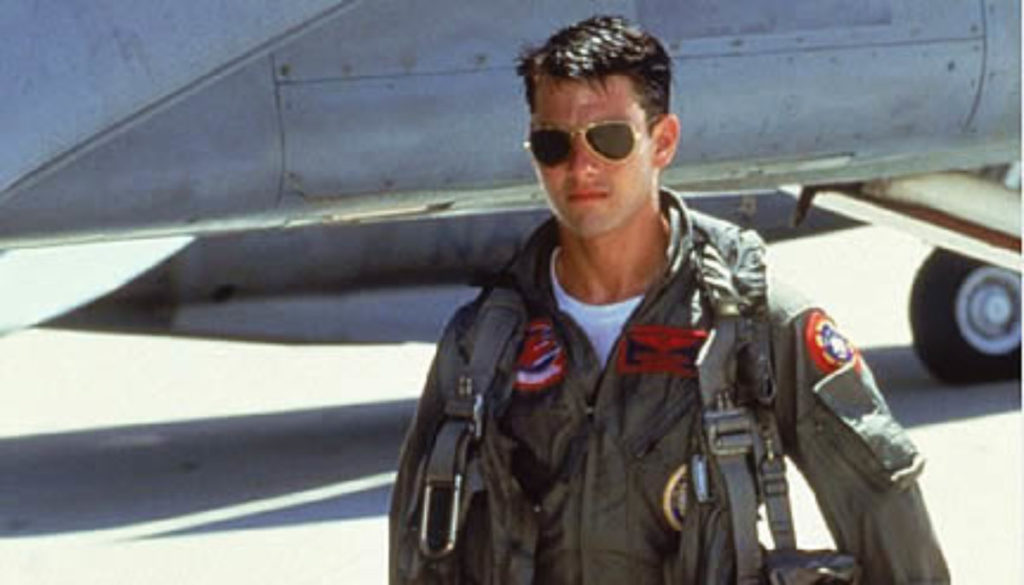
Needless to say, you’ll be hard-pressed to find any feminist themes in Tony’s Top Gun, the film that jumpstarted his career. Featuring Tom Cruise in the role that made him a certifiable movie star, the movie is a testosterone-laden and warfare-glamorizing studio blockbuster that is intended to be taken strictly at face value.
Top Gun follows a group of young male jet pilots competing for the top spot at an elite Fighter School. With the aid of eighties pop music, breathtaking aerial photography, and some lightning-paced editing decisions, the movie saturates its audience in the cutthroat, macho mentality of its characters. Tony’s ability to communicate the adrenalized thrill of their everyday reality is what makes the movie work so well on the level it aspires to reach.
Top Gun and G.I. Jane are both shameless comic book representations of the U.S. military. They are not exactly Oliver Stone films, as they both focus on the anticipation and excitement of battle, but never on its consequences or aftermath. Both films are charged with the same amped-up spirit that defines most of Tony’s filmmaking career and contrasts the majority of Ridley’s.
4. Matchstick Men (2003) and Man on Fire (2004)
The Scott brothers have both directed films that center on fundamentally flawed men getting a second chance at life through a newly discovered father/daughter relationship—whether it be a surrogate one or by way of actual genetics. Though their hearts are similar, each film’s execution couldn’t be more different. Ridley’s film is a character-driven and quirky comedy/drama that is observationally executed with restraint. Tony’s is a hyper-violent, hyper-paced, hyper-everything revenge thriller that uses in-your-face expressionism to put you in the mindset of its brutal protagonist.
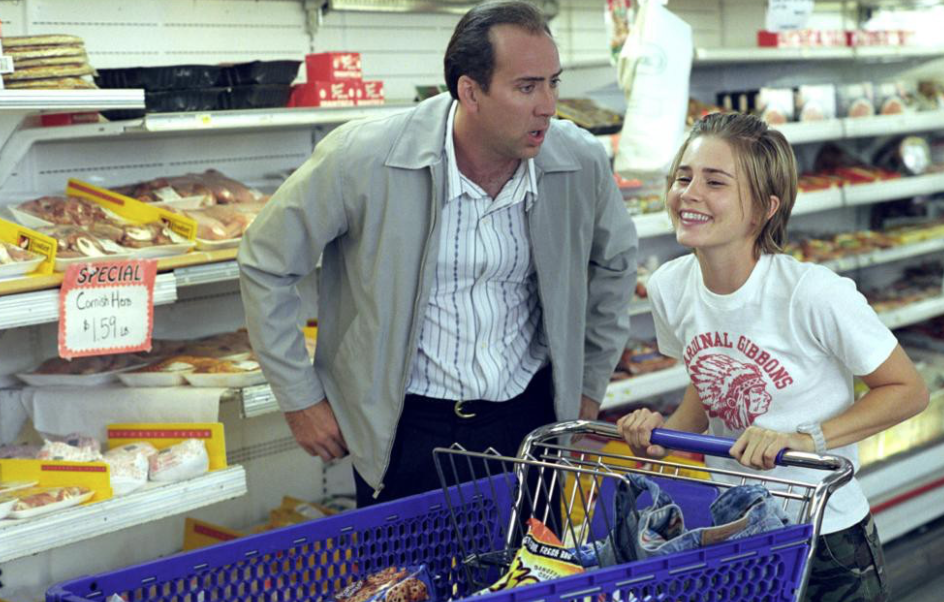
Ridley’s Matchstick Men stars an in-his-element Nicolas Cage as a Los Angeles conman suffering from obsessive-compulsive disorder. His world is turned upside down when his long-estranged teenage daughter (Alison Lohman) enters his life. The charming film is a relatively quiet entry from Ridley. It works as well as it does because he executes it with appropriate simplicity.
Matchstick Men, though not without its edginess, is ultimately a highly positive film. It is a story about a man who discovers a new way of life where he is no longer entrapped by his personal demons. It’s a breezy change of pace for Ridley, told with heart and an endearingly quirky voice. Matchstick Men is a Ridley Scott movie that matches the quality of his best work, but also heavily contrasts the tone.
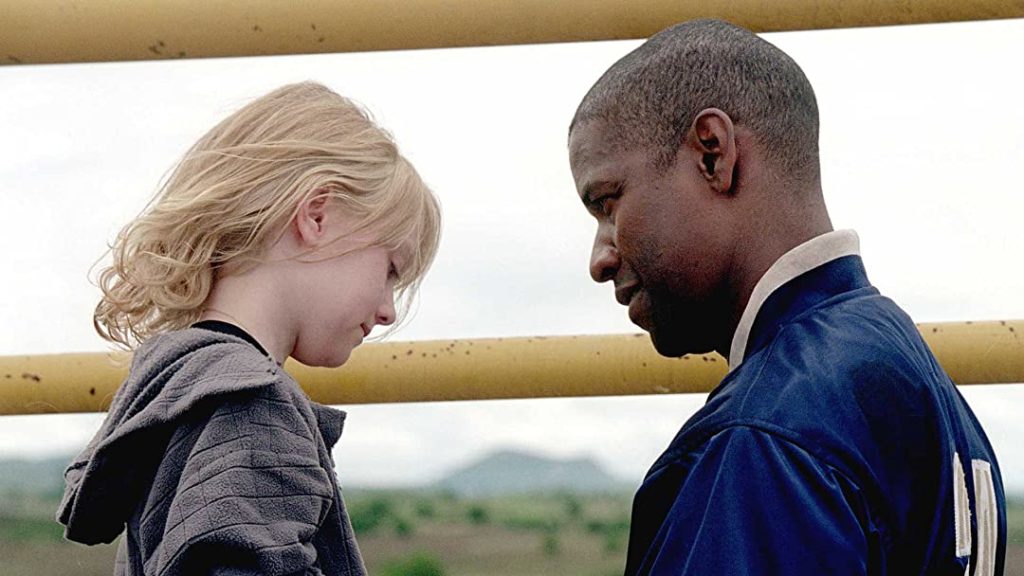
Matchstick Men also contrasts the tone of Tony’s gritty and ultra-violent Man on Fire. The film stars Denzel Washington as John Creasy, a hard-drinking, PTSD-suffering former CIA operative who becomes the bodyguard to a nine-year-old girl (Dakota Fanning,). The two form a bond, and a light is awakened in Creasy. When the girl is abducted, the violence of Creasy’s past forces itself into his present. He becomes an unstoppable force of vengeance, brutally and mercilessly punishing all those involved with Fanning’s kidnapping.
From a filmmaking standpoint, Man on Fire is one of Tony’s freest and most experimental efforts. Rapid-fire editing techniques, aggressive photography, and a frenzied use of subtitle graphics give the film a hyper-kinetic energy that is typical of his work. The brutality and the carnage are balanced, however, by moments of sensitivity and breathtaking beauty that are more akin to Ridley’s work. Such moments highlight the love between Washington’s and Fanning’s characters. Tony makes sure the audience feels not only Creasy’s wrath but also the extreme affection he holds for the child he is avenging.
Each film in this double feature, in its own unique way, is life-affirming. The primary difference is that Ridley’s movie achieves this by focusing on life’s new beginnings. Tony’s movie does so by saturating itself in violence and death.
3. Thelma & Louise (1991) and True Romance (1993)
Ridley and Tony Scott have both directed road movies that are quirky, funny, action-packed, and that feature their very own musical score by the one-and-only Hans Zimmer. Their many likenesses are met with several notable differences, however. Ridley’s film is a bold feminist statement for its times, while Tony’s (at first glance) is an adolescent male’s daydream come to very colorful and vivid life.
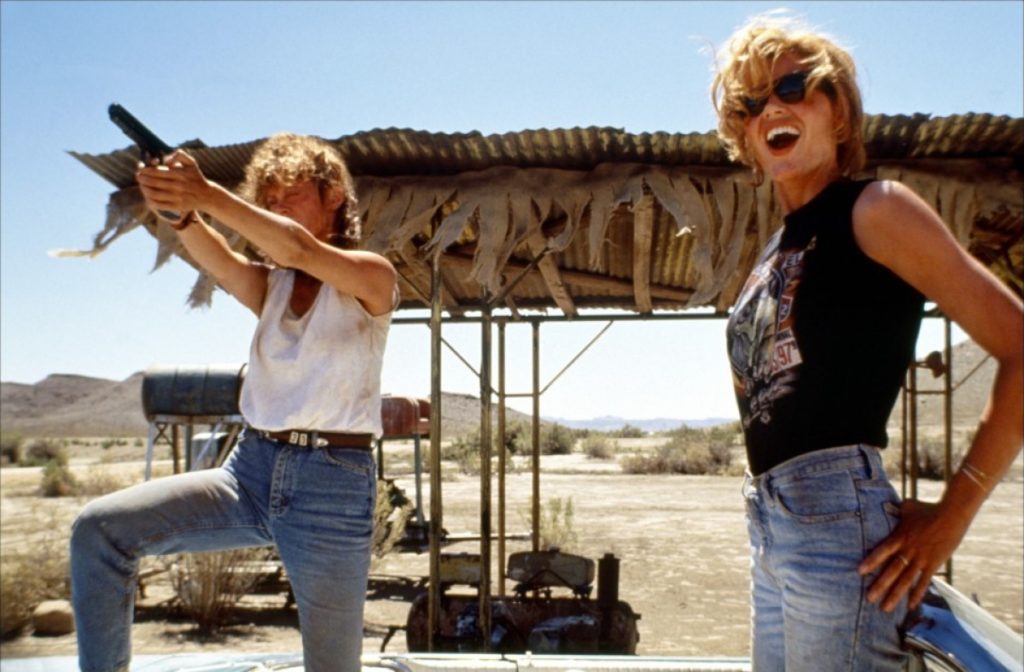
Thelma & Louise stars Susan Sarandon and Geena Davis as two friends whose weekend getaway is abruptly interrupted by an attempted sexual assault. When Sarandon kills the attacker, she and Davis are forced to go on the run. While on the road, they face numerous encounters with sexism and male abuse. The empowered women refuse to be victimized, however, and fight back against a male-dominated society with exciting, comical, and ultimately tragic results.
Through and through, Thelma & Louise is one of Ridley’s most accomplished and thoughtful films. It’s a gorgeous movie to look at, filled with picturesque American landscapes. Technical marvels aside, it also features the director at his most aware and heartfelt. The empathy he displays for the women in the film is wholly apparent. Their struggles are relayed with the utmost sensitivity and care. Ridley’s understanding of Callie Khouri’s emotional and authentic screenplay is effectively communicated. His lack of ego allows for her voice to come through as much as his, if not more.
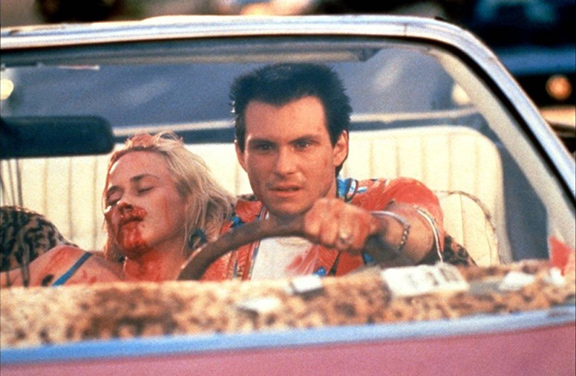
Tony, on the other hand, always directed movies with an indisputably male point of view. This is charmingly apparent in True Romance. Written by a then-rising Quentin Tarantino, the film plays like a comic book interpretation of his youthful fantasies: a guy meets a prostitute with a heart of gold, he kills her pimp to prove his love, and they go on the road where all kinds of adventures await. Moments of heavy gunplay, cool dialogue exchanges, and some very sexy love scenes are sprinkled throughout.
It must be noted that the character of Alabama (affably and ferociously portrayed by Patricia Arquette) was, at the time of the film’s release, the strongest female character of any of Tony Scott’s films. She is fully developed and complex, as capable of endearing sweetness as she is of brutal violence. She’s able to take care of and defend herself as well as any man stereotypically could. The duality of the character is what makes her such a fascinating and classic one.
It’s hard to call True Romance a feminist movie, but there are undeniable feminist undertones to Alabama’s character. She may not be as obvious of a choice as Thelma or Louise, but she refreshingly provides equality to a movie that otherwise would have been dominated by male sensibilities. Though they take different routes and have drastically different outcomes, the Scott brothers’ similarities are quite prominently on display in this particular double feature.
2. Alien (1979) and The Hunger (1983)
Ridley and Tony Scott have both directed horror movies. Ridley’s is an undisputed classic, while Tony’s is more appreciated on a cult level. They are two of the most visually exquisite and effectively atmospheric horror movies ever made. Stylistically, however, their contrasts are wholly apparent when viewing them back-to-back.
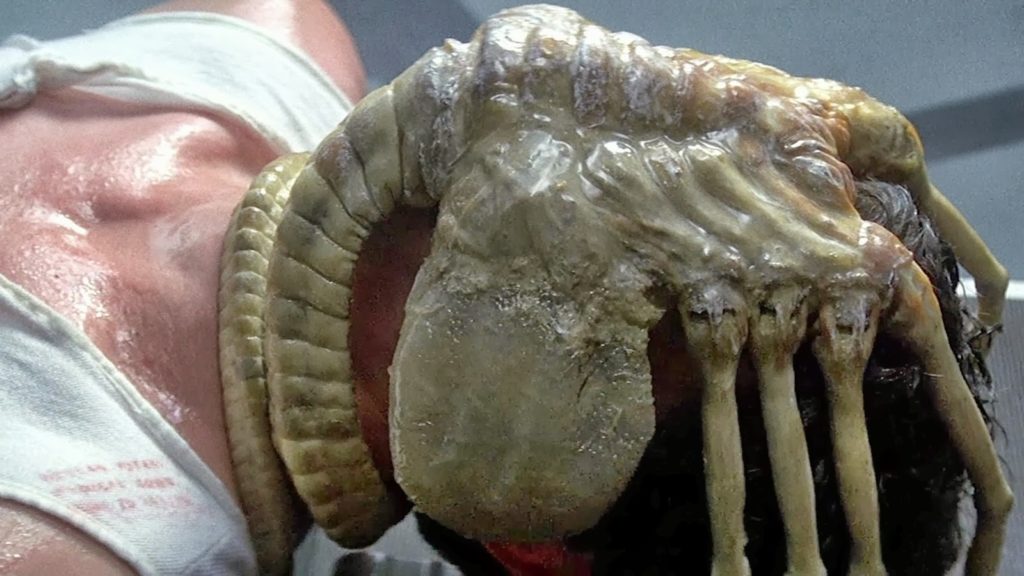
Alien not only put Ridley’s career on the trajectory of greatness, but it was also the start of one of the most celebrated franchises in movie history. Ridley’s slow pacing, his use of long takes, and his obsessive attention to detail give the film a deliberate and calculated terror that is, to this day, unparalleled. The director’s precision results in an effectively cold film, almost to the point of being disturbingly inhuman.
The titular creature of Alien, though overused and demystified in future sequels and prequels, remains a mystery for the entire film. It is assigned no motivation and no history. Alien is a horror classic because of Ridley’s understanding that the unknown is far more terrifying than the explained. The disciplined minimalism it took to execute such effective horror would serve Ridley well in future films that explored different genres.
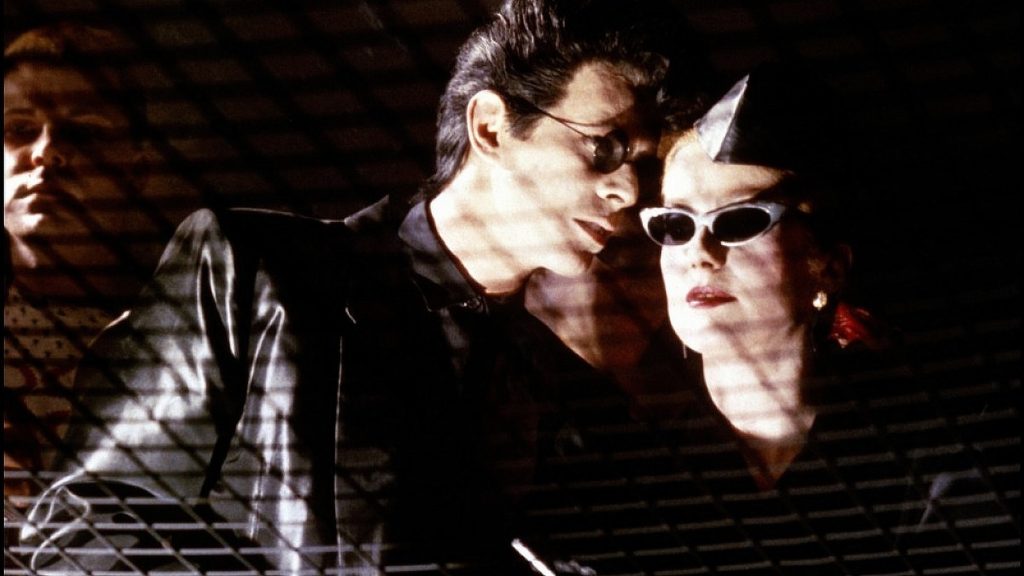
Like Alien, The Hunger thrives on the unknown. In The Hunger, the unknown isn’t strictly reserved for a central antagonistic creature, it applies to the film’s entire universe. The specifics of its story (which is based on Whitley Strieber’s novel) are never overtly explained. It is an abstract vampire film that lets its audience’s imagination run wild. Whereas Alien preys on our primal instincts to produce fear, The Hunger disturbs us on an intellectual level. It’s more concerned with unsettling its audience than it is in inducing conventional scares or suspense.
The Hunger heavily contrasts Alien’s controlled filmmaking, opting instead for an experimental and expressionistic style. The Hunger’s smoky photography, searing sound design, and non-linear, quick-cut editing all exemplify Tony’s penchant for boldness. The film is more akin to Nicolas Roeg’s avant-garde sensibilities or to the free-form approach of then-modern music videos than it is to a typical horror film.
The Hunger is an artistically risky film that is difficult to neatly categorize, whereas Alien knows exactly where it belongs. Both films are equally effective. The Scott brothers’ approach to horror is similar to their approach to other films. Tony’s film is a frenzied assault on the senses while Ridley’s is a meticulous and methodical exercise in fright.
1. Blade Runner (1982) and Domino (2005)
Ridley and Tony Scott both directed movies about bounty hunters. The films that comprise this double feature provide an example of each Scott brother completely and uncompromisingly in his element. While this means that the quality of both films is exceptional, it also means they differ from each other quite drastically.

Blade Runner is Ridley’s science fiction classic, considered by many to be the crowning achievement of his vast filmography.The film features him at his most controlled and his most meticulous. The world of Blade Runner is a carefully constructed and specifically designed one. The constant rain, the decaying but lively cityscapes, and the outlandish costume designs are as much a part of the film as its characters and its storyline. These elements help make the film the Citizen Kane of its time, as it has been paid homage to (or, more accurately, ripped off) countless times since its release.
The film stars Harrison Ford as Rick Deckard, a bounty hunter who tracks down and exterminates renegade humanoids (known in the film as “replicants”). Deckard eventually faces a crisis of conscience over taking lives for a living, regardless of their being artificial. He finds no thrill or gratification in it, and it only becomes more disturbing to him as the film progresses. Blade Runner examines death in a frank yet overwhelmingly beautiful manner. It is a contemplative film about what it means to be human and, ultimately, what it means to be alive.
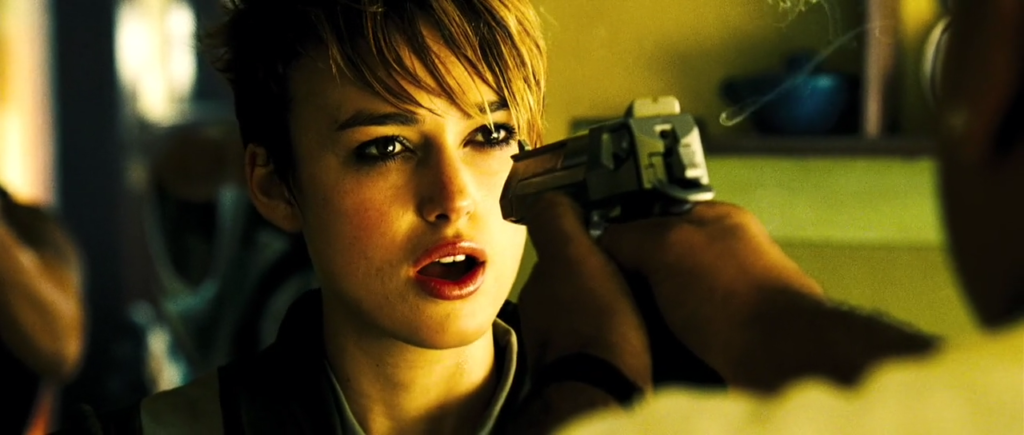
Bounty hunting may kill Deckard’s soul, but it brings the protagonist of Tony’s Domino to life. The film stars Keira Knightley as Domino Harvey, a real-life former rich girl turned bounty hunter on whom the film is based. Domino is one of the strongest and most personal characters of any of Tony’s films. She’s easily his toughest female character, able to match the aggression and bravery of any man. Like all classic Tony Scott characters, she is addicted to the adrenaline rush produced by the dangers of her job. Domino doesn’t have time to ruminate life because she’s too busy living and experiencing it.
Mirroring Domino’s thrill-seeking mindset, the film is the most rambunctious and vivacious Tony Scott film ever produced. If Blade Runner is a carefully brushed oil painting, then Domino is the result of randomly throwing paint cans against a canvas. The film is relentlessly kinetic, boisterously chaotic, and endearingly crazed. Its editing and photography are ultra-charged and brimming with life, inducing the same adrenaline that so deeply drives the film’s main characters.
While Ridley and Tony Scott’s movies frequently (and fascinatingly) overlap each other, it is impossible to deny that they are both entirely individualistic filmmakers. The double feature of Blade Runner and Domino showcases Ridley and Tony Scott at their most personal, their most artistically courageous, and their most unique. It proves there is no other filmmaker that quite parallels either one of them, not even his own brother.
